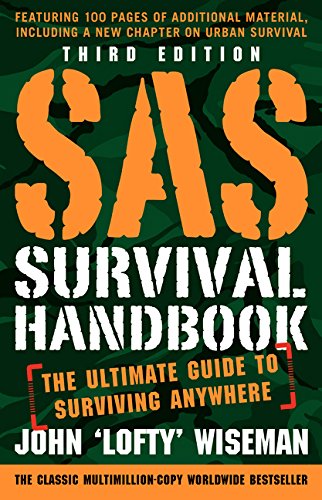It is easy to prove that the whole electric car thing is a gigantic fraud – as well as a con.
The fraud is the assertion that electric cars are the best – the only – way to reduce the putative danger of carbon dioxide being “emitted” by vehicles.
Actually, the best and only realistic (bear with) way to reduce these “emissions” (leaving aside for the moment the assumption that they are in fact dangerous) would be to halve the gas burned by non-electric cars. This is something that is not only very feasible it is also something very affordable – which electric cars are not.
And because they are not affordable (and leaving aside the question of the enormous volume of “emissions” generated by the mostly natural gas/coal and oil-fired utility plants that generate the excessive quantity of electricity they burn) most people aren’t able to buy them, which renders them pie-in-the-sky solutions to this putative problem.
 SAS Survival Handbook,...
Best Price: $12.99
Buy New $12.49
(as of 01:15 UTC - Details)
SAS Survival Handbook,...
Best Price: $12.99
Buy New $12.49
(as of 01:15 UTC - Details)
Unless, of course, the real-but-dare-not-say-it-yet solution is to “reduce emissions” by reducing driving to what it was before Henry Ford created the Model T – i.e., a luxury indulgence available only to the very affluent.
But if they are serious – and not serious about making the privately owned car a thing of the past for most people – then there is a much better way to “reduce emissions” of carbon dioxide.
It is to remove government-imposed obstacles that prevent the building – and selling – of gas-engined cars that burn half or less the gas of current government-mandated “economy” cars – and cost half or less what current, government-mandated “economy” cars cost.
Then more people could afford to drive them – and the more who drive them, the less gas emitted.
 Jetboil Flash Java Kit...
Best Price: $95.96
Buy New $144.95
(as of 10:02 UTC - Details)
Jetboil Flash Java Kit...
Best Price: $95.96
Buy New $144.95
(as of 10:02 UTC - Details)
Environmental win – without anyone losing.
This is not only possible, it is actual. Such cars exist – are sold – in other countries and could be sold here, were it not for the government. Specifically, were it not for government requirements that new economy cars pass crash tests that a steel-bodied vehicular dreadnought such as a ‘90s-era Mercedes S-Class would fail and be equipped with 6-8 air bags, necessitating the physical structure to support them. It is why even small economy cars like the 2021 Toyota Corolla and Hyundai Elantra I wrote about recently weigh two-thirds as much (about 3,000 pounds) as a ‘90s-era full-size Mercedes S-Class (which weighed about 3,900 pounds).
Keep in mind the Benz was a huge car – in terms of its footprint – relative to cars like the current Corolla and Elantra – and had a huge V8 under its hood rather than a small four. Yet the new-model compacts are two-thirds as heavy as the full-size (and V8 powered) luxury barges of 30 years ago.





